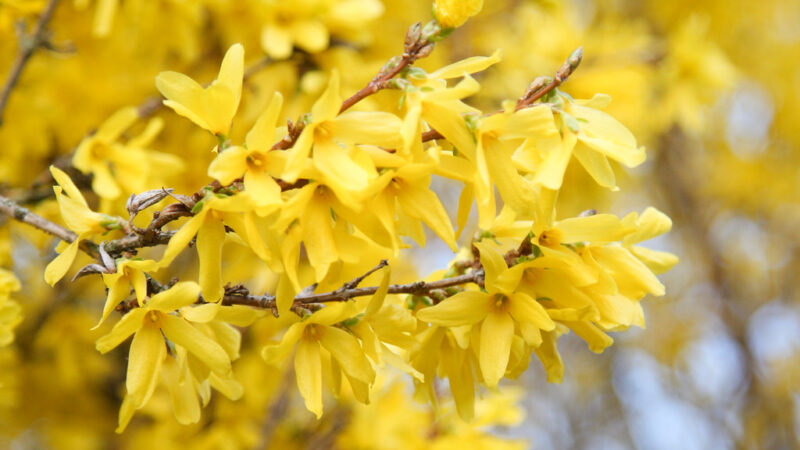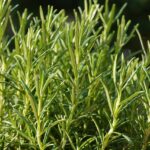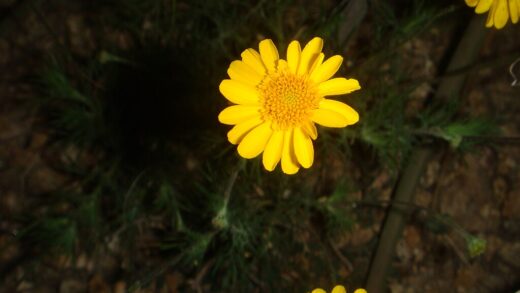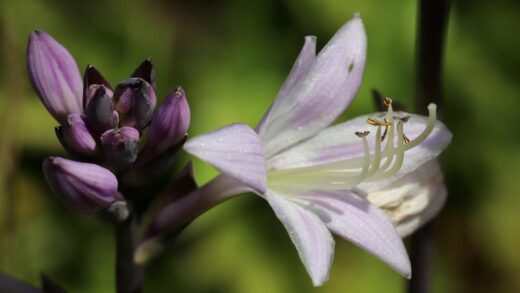Watering and fertilizing forsythia

Providing the appropriate amounts of water and nutrients is essential for cultivating a forsythia that not only survives but truly thrives, producing the magnificent explosion of yellow flowers it is famous for. While forsythia is a notably tough and adaptable shrub, a strategic approach to its watering and fertilization needs can elevate its performance from mediocre to spectacular. Understanding when to water and when to hold back is key, as is knowing that with fertilizer, more is not necessarily better for this particular plant. A balanced regimen that supports steady growth and prolific blooming without encouraging excessive, weak foliage is the ultimate goal for any gardener aiming for a show-stopping spring display.
Water is the lifeblood of any plant, and forsythia is no exception, particularly during its establishment phase. A newly planted shrub requires consistent moisture to help its root system grow and anchor itself in the new environment. During the first year or two, regular deep watering is critical to prevent drought stress and encourage the development of a robust, resilient root structure. However, once established, forsythia’s water needs change dramatically, and it becomes surprisingly drought-tolerant, a trait that adds to its appeal as a low-maintenance landscape plant. The challenge lies in transitioning your watering practices as the plant matures.
Fertilization, on the other hand, is a topic where restraint is often the best policy when it comes to forsythia. These shrubs are not heavy feeders and can perform beautifully in average garden soil without any supplemental nutrients. In fact, over-fertilizing is a common mistake that can lead to disappointing results. Applying too much fertilizer, especially formulas high in nitrogen, can stimulate a burst of lush, green leafy growth at the direct expense of flower buds. The outcome is often a large green shrub that produces very few of the desired yellow blossoms.
The key to successful watering and fertilization is observation. Your forsythia will provide visual cues to its needs. Wilting leaves can indicate a need for water, while pale foliage or poor flowering might suggest a nutrient deficiency. By learning to read these signs and combining this knowledge with an understanding of the plant’s seasonal needs, you can provide tailored care that ensures your forsythia remains a healthy and vibrant centerpiece in your garden for many years.
The importance of deep watering
When it comes to watering forsythia, the technique is just as important as the timing and frequency. The most effective method is deep watering, which involves applying water slowly and thoroughly to the base of the plant, allowing it to penetrate deep into the soil profile. This practice encourages the shrub’s roots to grow downward in search of moisture, creating a deep and extensive root system. A plant with deep roots is far more stable, resilient, and better equipped to withstand periods of drought compared to a plant with a shallow root system.
More articles on this topic
Shallow, frequent watering should be avoided at all costs. This common mistake encourages roots to stay close to the soil surface where moisture is readily available. While this might seem beneficial, it creates a weak, vulnerable plant that is highly susceptible to drying out during hot, sunny weather or short dry spells. Deep watering, performed less frequently, is the superior strategy. For a newly planted shrub, a deep soak once a week is a good starting point, while a mature, established forsythia may only need a deep watering every few weeks during the hottest, driest parts of the summer.
To water deeply, allow a hose to run on a slow trickle at the base of the plant for an extended period, or use a soaker hose that snakes around the root zone. This ensures the water is delivered directly where it is needed most and minimizes loss to evaporation. It also keeps the foliage dry, which is an important cultural practice for preventing the development and spread of fungal diseases such as leaf spot. The goal is to moisten the soil to a depth of at least 15 to 20 centimeters with each watering session.
The best way to determine if it is time to water is not by following a strict calendar, but by checking the soil itself. Insert your finger or a small trowel into the soil a few centimeters deep near the base of the plant. If the soil feels dry at this depth, it is time to provide a deep soaking. If it still feels moist, you can wait a few more days before checking again. This simple method accounts for variations in weather, soil type, and plant size, ensuring you provide water only when the plant actually needs it.
Fertilizing for flowers, not just leaves
The primary goal of fertilizing a forsythia is to encourage a spectacular display of flowers. This requires a specific approach to nutrient management, as the wrong type of fertilizer can have the opposite of the intended effect. The most important nutrient to be cautious with is nitrogen (the “N” in N-P-K ratios). While nitrogen is essential for healthy green growth, an excess of it will signal the plant to pour its energy into producing leaves and stems, often to the detriment of flower bud formation. Therefore, a high-nitrogen lawn fertilizer that drifts onto the forsythia’s root zone can inadvertently suppress its blooming.
More articles on this topic
If you determine that your forsythia needs feeding, perhaps due to poor soil or lackluster performance, opt for a balanced fertilizer or one that is slightly higher in phosphorus (the “P”). Phosphorus is a key nutrient that plays a vital role in flower and root development. A granular, slow-release fertilizer formulated for flowering shrubs, such as one with a 5-10-10 or 10-10-10 ratio, is an excellent choice. This provides a steady supply of nutrients over time without overwhelming the plant with a sudden jolt of nitrogen.
The timing of fertilizer application is also crucial for maximizing its benefit. The ideal time to feed your forsythia is in late winter or very early spring, just before the new season’s growth begins. Applying fertilizer at this time makes the nutrients available to the plant as it starts its active growth cycle, supporting the development of healthy foliage and, most importantly, the flowers that are about to emerge. A single application per year is almost always sufficient; fertilizing in late summer or fall is not recommended as it can encourage new growth that may be damaged by winter frost.
For those who prefer an organic approach, amending the soil with natural materials is a superior long-term strategy. Spreading a layer of high-quality compost, leaf mold, or well-rotted manure around the base of the forsythia each spring provides a wealth of balanced nutrients and beneficial microbes. This organic matter not only feeds the plant slowly and gently but also improves the soil’s structure, water retention, and overall health. A healthy, living soil is the best foundation for a healthy, floriferous shrub, often eliminating the need for any synthetic fertilizers.
Nutritional needs of young shrubs
Young, newly planted forsythia shrubs have slightly different nutritional needs compared to their mature counterparts. During the first one or two years after planting, the primary focus is on establishing a strong and extensive root system. This robust foundation is what will support the plant’s vigorous growth and abundant flowering in the future. While you still want to avoid excessive nitrogen, providing a small boost of nutrients can help a young plant get off to a great start, especially if the native soil is poor.
When you first plant your forsythia, it is highly beneficial to incorporate a source of phosphorus into the planting hole. Phosphorus is critical for stimulating root growth. You can mix a small handful of bone meal or a starter fertilizer with a higher middle number (P) into the backfill soil. This places the nutrient directly in the root zone where it can be readily accessed by the new plant. This initial application helps the shrub overcome transplant shock and begin establishing its roots more quickly.
For the first year, it is often best to hold off on applying any further general-purpose fertilizer. The starter fertilizer or compost mixed in at planting time is usually sufficient. The goal is to encourage the roots to grow outward in search of water and nutrients, not to pamper them with an overly rich soil environment right at the base. Pushing too much top growth with fertilizer before the root system is well-established can create an imbalanced plant that is more susceptible to drought and wind damage.
In the second spring, you can begin a very light fertilization program if needed. A balanced, slow-release fertilizer or a top-dressing of compost applied around the plant’s dripline is ideal. This gentle feeding will support the development of a strong branch structure and healthy foliage, which are necessary to power the plant through photosynthesis. By focusing on root health and balanced growth in the early years, you are setting the stage for a mature forsythia that will require minimal intervention and reward you with a breathtaking floral display year after year.
Identifying nutrient deficiencies
Although forsythia is generally low-maintenance, it can sometimes exhibit signs of nutrient deficiencies, particularly if grown in poor, sandy, or highly alkaline soils. Learning to recognize these visual cues can help you diagnose and correct the problem, restoring your shrub to optimal health. One of the most common signs is chlorosis, which is a yellowing of the leaves while the veins remain green. This condition is often caused by an iron deficiency, which is common in soils with a high pH that “locks up” the iron, making it unavailable to the plant.
If you suspect an iron deficiency, you can apply a product containing chelated iron, which is a form of iron that is more readily available for plant uptake. This can be applied as a soil drench or a foliar spray for a quicker, though more temporary, fix. For a long-term solution in alkaline soils, you may need to amend the soil over time with acidic materials like compost, pine bark mulch, or elemental sulfur to gradually lower the pH and make existing nutrients more available to the plant’s roots.
A general paleness or yellowing of the entire leaf, including the veins, especially on older, lower leaves, can indicate a nitrogen deficiency. This may be accompanied by stunted growth and a sparse appearance. While it is important not to over-apply nitrogen, a plant that is clearly deficient will benefit from an application of a balanced fertilizer. A single feeding in the spring with a 10-10-10 formula should be sufficient to correct the issue and restore the plant’s healthy green color.
Other nutrient deficiencies are less common in forsythia but can occur. For instance, a phosphorus deficiency might manifest as dull, purplish-tinged leaves and poor flowering, while a potassium deficiency can cause yellowing along the leaf margins of older leaves. If your plant is showing multiple symptoms or does not respond to simple treatments, a professional soil test is the most accurate way to determine the precise nature of the deficiency. A soil test will provide a detailed report on nutrient levels and pH, allowing you to amend the soil with exactly what is needed to support your thriving forsythia.
📷 Flickr / Szerző: Maja Dumat / Licence: CC BY 2.0

















